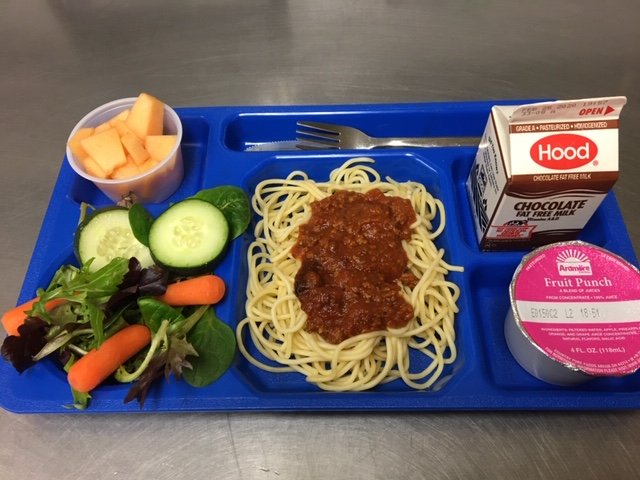Food Connects is thrilled to share the increased growth of our Food Hub family. As our team has established more partnerships with food hubs across New England, we’ve onboarded 35 producers over the past 18 months. These new producers represent an increase our diversity in products, ensuring our wholesale customers see Food Connects as a one-stop-shop.
Essex High School Partners with Food Connects
When you were in school, did you know where your food was coming from? Was your cafeteria sourcing from a local farm? Were you excited about food and learning more about it? Luckily, the answer to most of these questions for students throughout the Essex Westford School District is a resounding “yes!”
Essex High School, and the district at large, started purchasing local food from Food Connects in late 2021. The school nutrition program started with products like cheese from 5 Generations Creamery (over 80 lbs already!—that’s a lot of cheese!) and sparkling beverages from Samara. As they continue to experiment with more local foods, the students are the ones who will see the real benefits.
To learn more about the program and where they are heading with local foods, we chatted with Meghan Martin, the Child Nutrition Administrative Assistant.
What made you decide to work with Food Connects?
We were looking to expand our local food purchasing. Food Connects has direct connections with farms in Vermont and it makes it easier for us to put a name to the food that we’re serving our students. We have had that direct connection to farms in the past and we are excited to be able to continue highlighting a wider variety of local food producers. Starting slow but hoping to expand the local offerings in the future.
Parfaits made with Narragansett Creamery yogurt.
What products have been successful so far?
We purchased Narragansett yogurt and beef from Boyden Farm. Because the high school is a larger kitchen they can do more cooking with different local products and try out more recipes to see what works best. Those two items worked well!
Right now, the local food we are purchasing is just going to the high school and occasionally gets sent out to other schools. We tested out yogurt at the 3rd through 5th-grade school which was successful. With the larger kitchen size and student body at our high school, we find that it’s easier to start there with our scratch cooking products with the goal of then expanding our offerings into our other schools to the roughly 4,000 students district-wide.
Why are you interested in having regionally-sourced foods in your cafeteria?
The Farm to School movement is so prevalent right now. We have dabbled in it here and there. What we really want is to bring whole fresh foods into the district while supporting the local economy. As much as we are able, we want to close the gap between our students and the local food system and create a lasting connection between the two. It’s exciting that we are able to expand their horizons with their culinary palette and teach them what types of food we have available in our area.
Spaghetti and meat sauce made with Boyden Farm beef.
We saw that this year meals in the Essex Westford School district are free for all students 18 and under. How has this impacted your meal program?
This was through USDA waivers. With the help of these waivers, we have been able to put more focus and resources back into our meal program and we’ve seen that on average 67% more students are choosing school meals. That’s significantly more engagement and more bellies full with high quality and nutritious foods.
Additionally, Scott Fay, Senior Child Nutrition Manager, and Andrew Peet, Child Nutrition Site Manager, really wanted to work with Food Connects because of the Vermont Local Purchasing Incentive. Both this incentive and the USDA waiver put more funds back into the program and the food we provide, which allows us to get higher quality products.
How has this benefitted your students?
The students are able to access more food through the school. The more nutritious food the kids eat, the more they are ready to learn and be active throughout the day. There is already lots of positive feedback about the meals we serve—the students and staff are excited about the fresh, local food they are getting each day.
Anything else that you would like to share?
This year we have tried to revamp the menu, with the hope that it will bring in more participation and therefore revenue for the program. This includes more scratch cooking with fresh, whole produce and ingredients and so far, we are getting lots of positive feedback from changes especially when we can serve foods like Shepherd’s pie using beef from Boyden Farm. It has definitely been a process doing it on a large scale and district-wide but we have an amazing team and we’ve been working out all the details with staff over the years. We’re very excited about all the new menu changes.
Additionally, we have a Farm to School program and have done cooking activities with students and taste tests in the past. Most of that has put that on hold due to COVID-19 but we have started small again by doing more school-wide taste tests with the younger students. Our hope is that we can do these taste tests to gather feedback from students and update our menu with their input. We are also looking forward to the possibility of incorporating more Farm to School and nutrition content into the curriculum.


